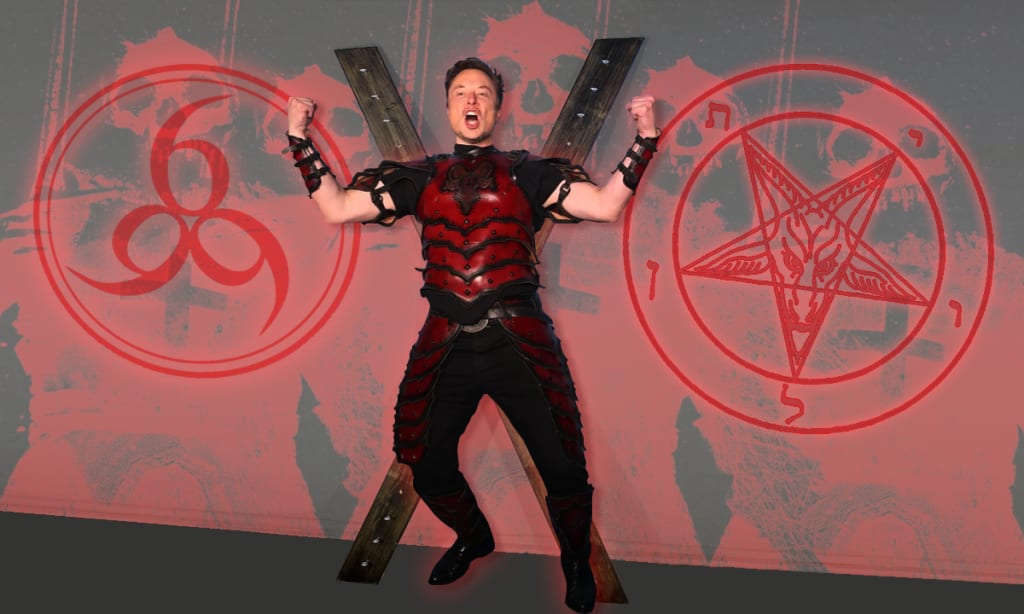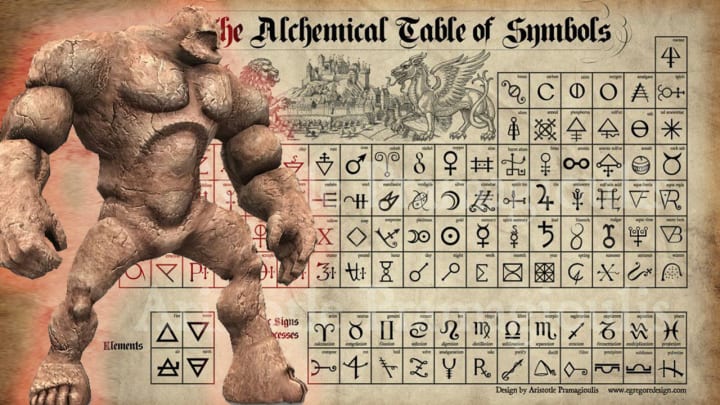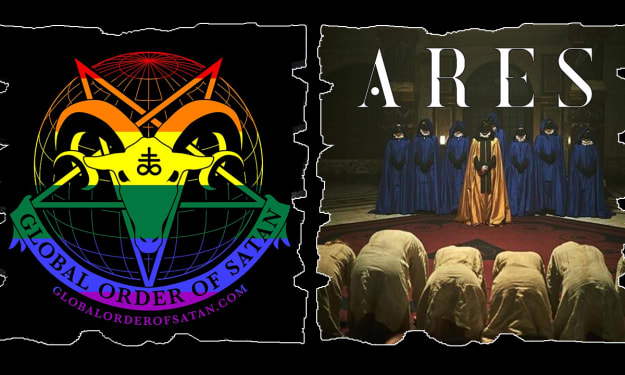Why Twitter rebranding has fuelled talk of the beast
And are NFTs one way to cash in on the gossip?

Just like the “weigh-in” histrionics that traditionally hype up boxing showdowns, there’s nothing quite like a bout between two “technotwats” to get tongues wagging in the world of social media.
Certainly much curiosity was generated when Elon Musk snapped up Twitter in 2022… the big question being whether he’d also target Instagram, acquired by Facebook founder Mark Zuckerberg in 2012.
It resulted in much sparring between the industry titans that was all pretty insignificant since Musk probably had no real interest in prising Instagram away from Zuckerberg as his acquisition of Twitter had already aligned the three most influential social platforms with the “New World Order” oligarchs who buddy up annually at the World Economic Forum summits in Davos, Switzerland.
Both men seem to relish the trash talk that swirls around whenever they appear to go head-to-head and they certainly put on a good show for the public, even though most interested parties should be aware by now that it’s all part of the WEF smokescreen.
And the sparring between the two has surfaced once again with Musk’s recent rebranding of Twitter, ditching the sweet little blue bird for a more menacing symbol far more in keeping with the NWO agenda, with Zuckerberg doing his bit to stir the pot since he also has claims on the “mark of the Musk” in the social realm too.
Now who gets to use it is not the real topic of interest here… that, I’d say, is why either would want an image with satanic and sadistic overtones, that their corporate due diligence would surely have alerted them to, as a fixture of their promotional plans?
True, the X symbol, which the new Twitter logo features, has been used in a great many fields from science to spirituality, but in the present context of world events spanning the past three years there’s not much doubt that those in the know will read so much more into Musk’s symbolic sentiments than them simply being a measure to align his social media interests with his SpaceX satellite operations and xAI, his new artificial intelligence platform.
An initial exploration of the symbol’s meaning is that it represents the duality of the known – where X marks the spot – and the unknown – through its use as an abstract algebraic term. But it has so many other meanings and conjures up occult and ritualistic practices, where it is frequently associated with death and resurrection, while signifying the end of one cycle and the start of another.
This association perhaps comes from the 15th letter of the Hebrew alphabet, samekh, which it is believed to have been derived from, with the Phoenician equivalent giving rise to the Greek "xi" character. Associated in occult settings to the ouroboros, a symbol of a serpent swallowing its own tail, it is a representation of the eternal cycle of change and transition.
But X is also believed to be representative of the ancient Egyptian deity Osiris, the god of the dead, with pharaohs buried with their arms and legs crossed in reverence to him. Also, in the Catholic tradition it is often perceived as being a representation of the Holy Trinity, while in Hinduism it plays a similar role being symbolic of Brahma, Vishnu and Shiva.
But it is in the traditions of Jewish mysticism and Kabbalah that the true significance of X to groups such as the Templars, Illuminati and Freemasons perhaps has its origins with it supposedly being a representation of the entrance to the unknown and being symbolic of the “mark of the beast” mentioned in the Book of Revelation, the final chapter of the Christian Bible, and numerically represented today as 666.
Now 666 in a Biblical context was represented in Greek numerals by chi, xi and stigma (χξϛ)... with X representing chi (and also associated with xi) while being “a mark” of the beast that also signifies Christ in Greek. Hence X being symbolic of the mark of the beast. However in the Roman alphabet any combination of the letters F, O and X can also represent 666 since F=6, O=15=1+5=6 and X=24=2+4=6… so 666 could be represented as XXX.
But this isn’t the end of the story, X also incorporates other more disturbing connotations such as being a representation of sacrifice and torture, exploitation, pornography and “the forbidden”.
The association with sacrifice and torture probably comes from the St Andrew’s Cross, which also plays into it being symbolic of the other negative perceptions.
One of Jesus’ most trusted disciples, St Andrew was martyred by crucifixion but he is said to have not considered himself worthy of dying in the same manner as the son of God and therefore requested a cross of a different shape for his crucifixion.
And, not only has the X-shaped cross become known as the St Andrew’s Cross, it has also been adopted as a heraldic symbol that features on the flags or arms of many claimants of St Andrew’s patronage, with perhaps the best example being in the flag of Scotland with its white “saltire” on a blue background… funnily enough one of the country’s, along with Switzerland, where the Knights Templar are believed to have sought refuge after being disbanded by the Catholic church in 1312.
But in keeping with many such stories there is another side to it with the cross also becoming a common piece of equipment in BDSM dungeons as erotic furniture that typically provides restraining points for ankles, wrists and the waist. So, when secured to an X-cross, the subject is restrained in a standing spread-eagle position… and apparently "bondage wheel" variants, pivoting on a central axle, are also a common plaything in BDSM circles, allowing subjects to be turned upside down.
As well as being an indication of a person requiring very large clothing, XXX (when coupled with 666) seems to bring up very explicit content on Google searches. I haven’t followed the links but the descriptions alone suggest the St Andrew’s Cross and BDSM probably represent the tip of the iceberg.
Explicit sexual content is usually represented as being X-rated in media channels with exploitation, sacrifice and torture being the extremes of the genre. And X also plays a similar role in wider society as a warning of the “forbidden or dangerous” on chemical packaging and hazard signs.
In Medieval alchemy tables, X predominantly represents “tallow”… a rendered form of beef or mutton fat (primarily made up of triglycerides) but in an industrial context it is not strictly defined as beef or mutton fat and refers to any "animal fat” that conforms to certain technical criteria. Commercial tallow commonly contains fat derived from other animals, such as lard from pigs, or even from plant sources. The Nazis were also alleged to have been quite creative in their use of other animal fats too.
But in some alchemical charts X also seems to refer to "TalcK", or talcum, a clay mineral that is often used in industry as a thickening agent.
And, here’s where the plot thickens. In Jewish mysticism and Kabbalah there’s a creature called the golem, an artificial entity conjured up by magic. In Greek and Arab mythology this is often connected with astrology and the possibility of “drawing the spirituality of the stars” to lower beings. An animated, anthropomorphic being in Jewish folklore, the golem is entirely created from inanimate matter, usually clay or mud, but perhaps tallow too.
In Hebrew “golem” stands for “shapeless mass” and the Talmud, the gospel of Jewish religious law and theology, uses the word as “unformed” or “imperfect” and according to Talmudic legend Adam is referred to as “golem”, meaning “body without a soul”, for the first 12 hours of his existence.
The golem appears in other places in the Talmud too, with the prophet Jeremiah claimed to have made one, but some mystics believe the stories are more symbolic... like a spiritual experience following a religious rite. It could even simply be viewed as a label for a person lacking a soul.
But the Sefer Yezirah, the book of Jewish mysticism, even contains instructions on how to make one, which involves shaping a figure resembling a human and using God’s name to bring it to life, since God is the ultimate creator.
According to one story, to create a golem it would have to be shaped out of soil then brought to life by walking or dancing around it saying a combination of letters from the alphabet and the secret name of God. To “kill” the golem its creators would walk in the opposite direction saying the words backwards.
Other sources say once the golem has been physically made, writing the letters aleph, mem and tav, meaning truth, on its forehead bring it to life... but by erasing the, aleph, to leave mem and tav, meaning “death”, it can be killed. Another way to bring a golem to life is to write God’s name on parchment and stick it on its arm or in its mouth, with its removal stopping it.

There’s even a golem museum in Prague’s Jewish Quarter and it’s an intriguing story that has featured in plays, novels, musicals and movies since the early 20th Century, so it’s hardly surprising it was a storyline in Chris Carter's ground-breaking sci-fi series The X-Files… figuring in the 15th episode of the fourth season, Kaddish, written by Howard Gordon. It’s also an interesting aside that the given name of The X-Files’ lead character is Fox, now that’s an apocryphal coincidence isn’t it!
Now I’m not suggesting this may be why Musk chose to rebrand Twitter with an X… but alchemy, the Kabbalah, Jewish mysticism, resurrection, the New World Order and the eternal cycle of change could certainly have influenced his decision… if only his due diligence team had told him about the X-shaped cross, BDSM, golem and the mark of the beast.
But perhaps they did? The mark of the beast occupies a pivotal role in Christian eschatology, the study of the “end of times”, with cryptocurrency sometimes interpreted as being the tool of the Antichrist, which mankind has to rely upon to purchase food and survive under demonic rule.
Specifically, the mark of the beast comes from the Book of Revelation 13:17, which says people will need to get a mark on their bodies in order to purchase necessities: “And that no man might buy or sell, save he that had the mark, or the name of the beast, or the number of his name.”
This mark is forced upon everyone, from the rich to the poor, and the growth of cryptocurrency – with users and investors installing microchip implants in their hands to access their wallets for safety and convenience – only serves to fuel the notion.
Many believe the migration towards crypto will eventually result in a one-world currency and today Ethereum's ETH is second only to Bitcoin as the most valuable cryptocurrency network in the world.
So it’s interesting to read that already a platform, featuring an X, exists that has been designed to speed up transactions on ETH and help people trade in non-fungible tokens (NFTs) that certify ownership and authenticity of digital items.
A fungible asset is something with units that can be readily interchanged, such as money, with say a £10 note being equivalent to two £5 notes that carry the same value. But if something is non-fungible it means it has unique properties that prevent it from being interchanged with something else.
It could be a house, or a painting such as the Mona Lisa, which is a one-of-a-kind item. People can take photos of it or buy a print but there will only ever be one original. So NFTs are "one-of-a-kind" assets in the digital world that can be bought and sold like any other piece of property, but which have no tangible form of their own. The digital tokens can be thought of as certificates of ownership of these virtual assets.
NFTs can be created by anybody, and require few or no coding skills to create, but they typically contain references to digital files such as artwork, photos, videos or audio that can be traded.
Now one product that allows this on Ethereum is Immutable X, a layer-two scaling solution and NFT trading platform launched in 2018 by an Australian tech company founded by James and Robbie Ferguson.
The system has its own “native cryptocurrency”, known by the ticker handle IMX, with scaling technology, called ZeroKnowledge Rollup (ZKRollup), that provides the heart of Immutable X’s ability to validate transactions on the Ethereum blockchain.
Immutable X takes transactions off Ethereum and carries them out before putting them back on the chain. It also allows people to buy, sell and trade NFTs by using an order book and “liquidity pools”.
Now NFTs are a favourite investment tool for global celebrities from various realms such as music, sport and entertainment and they allow users to own exclusive items such as art, merchandise, signatures and many other things in the form of digital collectibles. These tokens can be owned, traded and monetised to fetch lucrative returns.
So, what do you think happened after Musk’s Twitter rebranding? Yeah, you’d be right, the Immutable X “token” saw an upward swing with price predictions for strong growth through to 2030.
So IMX, is it the mark of the beast and will Musk play any part in its future? Well, I guess you pays your money and takes your chance, or not as the case may be. But it’ll soon be Harvest Festival… perhaps corn dolls are a better investment?
About the Creator
Steve Harrison
From Covid to the Ukraine and Gaza... nothing is as it seems in the world. Don't just accept the mainstream brainwashing, open your eyes to the bigger picture at the heart of these globalist agendas.
JOIN THE DOTS: http://wildaboutit.com






Comments (1)
I still have to get used to the new brand.